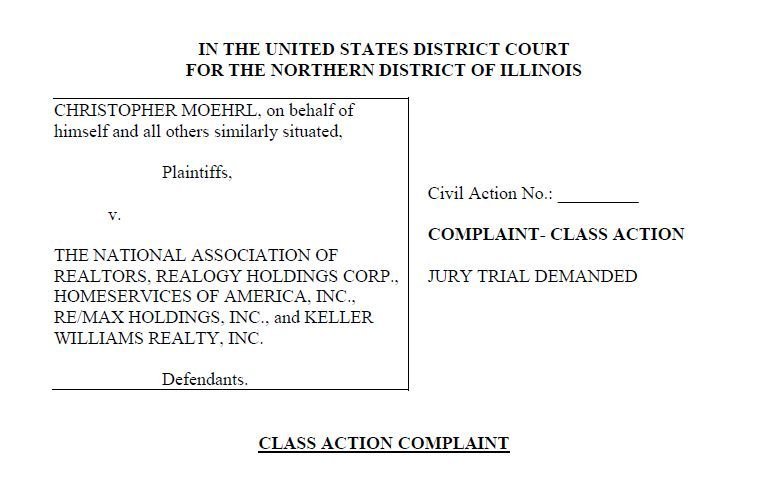BioVie Class Action Lawsuit Unveiled: Your Legal Resource
Discovering Course Activity Claims: What You Required to Know
Class action suits have become progressively prevalent in today's legal landscape, with individuals signing up with pressures to prosecute against companies and firms. In this conversation, we will explore the ins and outs of class action legal actions, clarifying their definition, the requirements for filing, and the potential benefits and downsides entailed. We will dive right into the steps entailed in a class action legal action and take a look at some recent spots situations that have formed this area of regulation. Comprehending the complexities and subtleties of class activity suits is important for anybody looking for justice in a collective fashion, so let's start our exploration with each other.
The Meaning of Course Action Claims
Exactly what is the meaning of a course action claim? A course action claim is a lawful action submitted by a group of people who have similar cases versus an offender. It enables a multitude of people, referred to as the class members, to sign up with together and pursue their cases jointly, instead of each private filing a separate claim. Course activity suits are generally brought when the number of prospective complainants is also large for individual suits to be functional. They are typically utilized in situations including consumer security, product liability, safety and securities scams, and work problems.
One of the key elements of a course activity suit is that the lead plaintiff, also recognized as the course agent, represents the interests of all the course members. The court designates the lead plaintiff based upon their capability to fairly and effectively stand for the class. The lead plaintiff functions carefully with the class activity lawyer to seek and construct a solid case compensation or various other treatments on behalf of the entire course.
In order for a class action claim to proceed, the court must license the course. This implies that the court identifies that the claim meets specific requirements, such as numerosity (a huge sufficient number of course members), commonness (common inquiries of law or reality), typicality (the claims of the lead complainant are common of the course), and adequacy of depiction (the lead plaintiff and course counsel are qualified of representing the course's interests) When the course is certified, the legal action can progress, and any judgment or settlement got to will relate to all class participants unless they choose to opt-out.
Class activity lawsuits serve a vital function in giving access to justice for individuals that may not have the sources to seek their claims separately. They additionally advertise performance in the legal system by consolidating comparable claims into a solitary activity, reducing the problem on both the court and the events involved.
Requirements for Filing a Course Activity Legal Action

One more demand is that the class should be adequately many. The precise number of class members required might vary relying on the territory and the nature of the instance. Nevertheless, it is typically expected that the course needs to be big enough that joining all the individual complainants right into a solitary suit is much more efficient than having multiple different claims.
Furthermore, it is necessary that the course agent, that is the private or entity bringing the suit in behalf of the class, has typical claims and defenses to those of the class members. The representative should also be able to adequately and rather represent the interests of the whole class.

Advantages and Downsides of Class Action Legal Actions
Course action lawsuits supply both advantages and disadvantages for plaintiffs and offenders associated with the legal procedure. On the one hand, among the significant benefits of course action legal actions is that they supply a efficient and cost-effective way for people with similar cases to go after justice jointly. By combining numerous comparable cases right into one suit, course actions simplify the legal procedure and save time and sources for both defendants and complainants.
An additional benefit of class activity suits is that they permit people with restricted sources to seek settlement for their damages. In instances where the prospective recovery is tiny, specific lawsuits may not be economically feasible. By joining forces in a course activity, complainants can merge their resources and increase their chances of acquiring a reasonable resolution.
In addition, class actions can promote social change by holding corporations liable for their activities. By bringing focus to prevalent misconduct or defective products, class actions can pressure companies to change their practices, improve product safety, or implement reforms.
However, class actions also have drawbacks. One potential disadvantage is that private complainants might have restricted control over the lawsuits procedure and the supreme result of the situation. The lead plaintiffs and their attorneys usually make essential decisions in behalf of the entire course, which might not always align with the individual interests of each course participant.
Furthermore, class actions can be prolonged and lengthy, frequently taking years to reach a resolution. The intricacy and dimension of these suits can lead to hold-ups and extended litigation, which can be frustrating for both defendants and complainants looking for a timely resolution.
Steps Associated With a Class Action Legal Action
The process of a course action claim commonly starts with the identification of a possible class and the filing of an issue. When a team of people that share similar claims versus a defendant is determined, the lead complainant, or course agent, files a problem in support of the whole class. This issue describes the claimed misdeed and looks for damages or various other alleviation for all members of the course.
After the complaint is filed, the court will certainly determine whether the situation meets the demands for course accreditation. These needs normally consist of numerosity (a large sufficient course), commonality (similar lawful cases), typicality (the lead plaintiff's insurance claims are depictive of the course), and adequacy of representation (the lead complainant and their lawyer can sufficiently stand for the course's interests)
If the court licenses the course, notice is given to all potential class members, providing them the possibility to opt-out if they desire to pursue their own private insurance claims - Future FinTech class action lawsuit. If an enough variety of class members remain, the situation will proceed to the discovery phase, where both sides gather evidence and info appropriate to the insurance claims
Complying with exploration, the events might take part in negotiation arrangements or continue to test. If the instance mosts likely to test and the course prevails, the court will identify the suitable damages or relief to be awarded to the class members.
Recent Spots Course Activity Suits
With a additional info strong understanding of the steps associated with a course action suit, it is now important to analyze some recent spots instances that have actually made a considerable effect in the legal landscape. BioVie class action lawsuit. These cases have not only formed the method class activity legal actions are performed next however have also brought around modifications in various industries
One such spots situation is the Volkswagen emissions rumor, which caused the largest course activity settlement in auto history. In 2015, it was revealed that Volkswagen had actually set up software in their lorries to cheat emissions examinations. This deception influenced countless customers worldwide, causing a class activity lawsuit. The negotiation reached in 2016 totaled up to around $15 billion, compensating afflicted automobile proprietors and imposing fines on Volkswagen.
One more significant instance is the Johnson & Johnson talcum powder suit. Thousands of ladies submitted legal actions against the company, declaring that their talcum powder items created ovarian cancer cells.
These recent spots situations demonstrate the power of class activity claims in holding firms liable for their actions and looking for justice for damaged people. They work as examples of how class action suits can bring around substantial adjustments and protect the rights of consumers.
Conclusion
To conclude, class action suits are a legal mechanism that allows a group of individuals to collectively look for justice for an usual complaint. While they supply numerous advantages such as performance and cost-effectiveness, there are additionally disadvantages such as prospective for restricted payment and prolonged legal proceedings. Understanding the needs and actions associated with filing a course activity claim is critical for people seeking to pursue this legal avenue. Current site class action legal actions have highlighted the value of such situations in More hints promoting for consumer civil liberties and company responsibility.
One of the key components of a class activity suit is that the lead plaintiff, likewise known as the course representative, stands for the interests of all the course members.In order for a course action claim to proceed, the court has to certify the course. This implies that the court establishes that the suit satisfies particular requirements, such as numerosity (a large enough number of course members), commonness (typical concerns of law or reality), typicality (the insurance claims of the lead complainant are normal of the course), and competence of representation (the lead complainant and class advise are capable of representing the course's passions) When the course is certified, the claim can relocate forward, and any type of judgment or negotiation got to will apply to all class participants unless they pick to opt-out.
The process of a class action legal action usually starts with the identification of a prospective course and the declaring of a complaint.